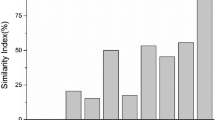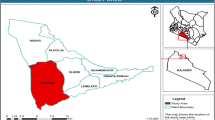Abstract—
Habitat change is one of the most important driving forces of biodiversity loss and vegetation distribution in freshwater wetland. Research on the responses of plant diversity and community structure to habitat change is essential to biodiversity conservation. In this study, we demonstrated responses of the above-ground biomass, plant diversity, and dominant species to the habitat change in the Sanjiang Plain, Northeast China. Different plant diversity indicators, including the species richness, Shannon-Wiener index, and Simpson index were selected to study their sensitivities to the habitat change. The dominant species, Deyeuxia angustifolia (Kom.) Y.L. Chang, Carex lasiocarpa Ehrh, Carex pseudocuraica Fr. Schmidt and Glyceria spiculosa (Schmidt.) Roshev, were selected to illustrate their vulnerabilities to the habitat change at the population level. Besides, the relationships between water level and traits of dominant species were investigated. When the habitat changed from marsh to meadow, the above-ground biomass increased and a corresponding plant diversity loss occurred. In addition, C. lasiocarpa, C. pseudo-curaica, and G. spiculosa had higher importance values in the marsh than that in the meadow, which were contrary to that of D. angustifolia. Overall, plant diversity and community structure had significant vulnerabilities to habitat change, and habitat protection is of great importance in biodiversity conservation.





Similar content being viewed by others
REFERENCES
Mace, G.M., Norris, K., and Fitter, A.H., Biodiversity and ecosystem services: A multilayered relationship, Trends Ecol Evol., 2011, vol. 27, no. 1, pp. 19–26.
Pascual, M., Pérez Miñana, E., and Giacomello, E., Integrating knowledge on biodiversity and ecosystem services: Mind-mapping and Bayesian network modelling, Ecosyst. Serv., 2016, vol. 17, pp. 112–122.
De Bello, F.D., Lavorel, S., Diaz, S., et al., Towards an assessment of multiple ecosystem processes and services via functional traits, Biodivers. Conserv., 2010, vol. 19, no. 10, pp. 2873–2893.
Liquete, C., Gid, N., Lanzanova, D., et al., Perspectives on the link between ecosystem services and biodiversity: The assessment of the nursery function, Ecol. Indic., 2016, vol. 63, pp. 249–257.
Sasaki, T. and Lauenroth, W.K., Dominant species, rather than diversity, regulates temporal stability of plant communities, Oecologia, 2011, vol. 166, no. 3, pp. 761–768.
Huston, M.A. and Wolverton, S., The global distribution of net primary production: Resolving the paradox, Ecol. Monogr., 2009, vol. 79, no. 3, pp. 343–377.
Kerns, B.K. and Ager, A., Risk assessment for biodiversity conservation planning in Pacific Northwest forests, For. Ecol. Manag., 2007, vol. 246, no. 1, pp. 38–44.
Dana, G.V., Kapuscinski, A.R., and Donaldson, J.S., Integrating diverse scientific and practitioner knowledge in ecological risk analysis: A case study of biodiversity risk assessment in South Africa, J. Environ. Manage., 2012, vol. 98, 134–146.
Humbert, J.Y., Dwyer, J.M., Andrey, A., and Ariettaz, R., Impacts of nitrogen addition on plant biodiversity in mountain grasslands depend on dose, application duration and climate: A systematic review, Glob. Change Biol., 2016, vol. 3, no. 1, pp. 191–201.
Todd, M.J., Muneepeerakul, R., Pumo, D., et al., Hydrological drivers of wetland vegetation community distribution within Everglades National Park, Florida, Adv. Water Resour., 2010, vol. 33, no. 10, pp. 1279–1289.
Royan, A., Hanna, D.M., Reynolds, J., et al., River birds’ response to hydrological extremes: New vulnerability index and conservation implications, Biol. Conserv., 2014, vol. 177, pp, 64–73.
Temesgen, H.W., Shi, X., Yirsaw, E. Bekele, B., and Kindu, M., Variation in ecosystem service values in an agroforestry dominated landscape in Ethiopia: Implications for land use and conservation policy, Sustainability, 2018, vol. 10, no. 4, p. 1126.
Millennium Ecosystem Assessment Panel, Ecosystems and Human Well-Being: Biodiversity Synthesis, Washington, DC: World Resources Institute, 2005, pp. 77–101.
Souza, D.M., Teixeira, R.F.M., and Ostermann, O.P., Assessing biodiversity loss due to land use with Life Cycle Assessment: Are we there yet?, Glob. Change Biol., 2015, vol. 21, no. 1, pp. 32–47.
Pimm, S.L., Jenkins, C.N., Abel, R., et al., The biodiversity of species and their rates of extinction, distribution, and protection, Science, 2014, vol. 344, no. 6187, 1246752.
Campagnaro, T., Trentanovi, G., and Sitzia, T., Identifying habitat type conservation priorities under the habitats directive: Application to two Italian biogeographical regions, Sustainability, 2018, vol. 10, no. 4, 1189.
Munns, W.R., Jr., Rea, A.W., Suter, G.W. 2nd, et al., Ecosystem services as assessment endpoints for ecological risk assessment, Integr. Environ. Assess. Manag., 2016, vol. 12, no. 3, pp. 522–528.
Nienstedt, K.M., Brock, Th., Wensem, J., et al., Developing specific protection goals for environmental risk assessment of pesticides using an ecosystem services approach, Sci. Tot. Environ., 2011, vol. 415, no. 2, pp. 31–38.
Giam, X., Bradshaw, C.J.A., Tan, H.T.W., et al., Future habitat loss and the conservation of plant biodiversity, Biol. Conserv., 2010, vol. 143, no. 7, pp. 1594–1602.
Alofs, K.M., Gonzalez, A.V., and Fowler, N.L., Local native plant diversity responds to habitat loss and fragmentation over different time spans and spatial scales, Plant Ecol., 2014, vol. 215, no. 10, pp. 1139–1151.
Merbach, W., Habitat fragmentation and biodiversity conservation: Key findings and future challenges, Landsc. Ecol., 2016, vol. 31, no. 2, pp. 219–227.
Zhao, K., Mires of China, Beijing: Science Press, 1999, pp. 164–166.
Luo, W., Song, F., and Xie, Y., Trade-off between tolerance to drought and tolerance to flooding in three wetland plants, Wetlands, 2008, vol. 28, no. 3, pp. 866–873.
Zhang, X., Mao, R., Gong, C., et al., Effects of hydrology and competition on plant growth in a freshwater marsh of northeast China, J. Freshw. Ecol., 2014, vol. 29, no. 1, pp. 4942–4954.
Wang, Z., Song, K., Ma, W., et al., Loss and fragmentation of marshes in the Sanjiang Plain, Northeast China, 1954–2005, Wetlands, 2011, vol. 31, no. 5, pp. 945–954.
Zhou, D., Gong, H., Wang, Y., et al., Driving forces for the marsh wetland degradation in the Honghe National Nature Reserve in Sanjiang Plain, Northeast China, Environ. Model. Assess., 2009, vol. 14, no. 1, pp. 101–111.
Zhou, D., Gong, H., Wang, Y., et al., Spatial distribution patterns of wetland plants in relation to environmental gradient in the Honghe National Nature Reserve, Northeast China, J. Geogr. Sci., 2012, vol. 22, no. 1, pp. 57–70.
Na, X.D., Zhang, S.Q., Kong, B., et al., Effects of Sanjiang Plain land use/cover change on wetland vegetation degradation of Honghe Nature Reserve, J. Arid Land Resour. Environ., 2009, vol. 23, no. 3, pp. 144–150.
Liu, H. and Li, Z., Effects of land use/cover change on wetland landscape of Honghe Nature Reserve, Acta Geogr. Sinica, 2007, vol. 2007, no. 11, pp. 1215–1222.
Dwire, K.A., Kauffman, J.B., Brookshire, E.N.J., and Baham, J.E., Plant biomass and species composition along an environmental gradient in montane riparian meadows, Oecologia, 2004, vol. 139, no. 2, pp. 309–317.
Paillisson, J.M. and Marion, L., Can small water level fluctuations affect the biomass of Nymphaea alba in large lakes?, Aquat. Bot., 2006, vol. 84, no. 3, pp. 259–266.
Scholte, P., Maximum flood depth characterizes above-ground biomass in African seasonally shallowly flooded grasslands, J. Trop. Ecol., 2007, vol. 23, no. 1, pp. 63–72.
Shi, F., Cong, Ch., Zhang, X., et al., Plant zonation patterns reflected by the differences in plant growth, biomass partitioning and root traits along a water level gradient among four common vascular plants in freshwater marshes of the Sanjiang Plain, Northeast China, Ecol. Eng., 2015, vol. 81, pp. 158–164.
Wu, G.L. Ren, G.H., Wang, D., et al., Above- and below-ground response to soil water change in an alpine wetland ecosystem on the Qinghai-Tibetan Plateau, China, J. Hydrol., 2013, vol. 8, no. 4, pp. 907–911.
Mao, R., Chen, H.M., Zhang, X.H., et al., Effects of P addition on plant C:N:P stoichiometry in an N-limited temperate wetland of Northeast China, Sci. Tot. Environ., 2016, vol. 559, pp. 1–6.
Curran, M., Hellweg, S., and Beck, J., Is there any empirical support for biodiversity offset policy?, Ecol. Appl., 2014, vol. 24, no. 4, pp. 617–632.
Davidson, T.A., Mackay, A.W., Wolski, P., et al., Seasonal and spatial hydrological variability drives aquatic biodiversity in a flood-pulsed, sub-tropical wetland, Freshw. Biol., 2012, vol. 57, no. 6, pp. 1253–1265.
Garssen, A.G., Baattrup-Pedersen, A., Voesenek, L.A., et al., Riparian plant community responses to increased flooding: A meta-analysis, Glob. Change Biol., 2015, vol. 21, no. 8, pp. 2881–2890.
Lou, Y., Pan, Y., Gao, C., et al., Response of plant height, species richness and aboveground biomass to flooding gradient along vegetation zones in floodplain wetlands, Northeast China, PloS One, 2016, vol. 11, no. 4, e0153972.
Chen, I.C., Hill. J.K., Ohlemüller, R., et al., Rapid range shifts of species associated with high levels of climate warming, Science, 2011, vol. 333, no. 6045, pp. 1024–1026.
Harsch, M.A. and Hillerislambers, J., Climate warming and seasonal precipitation change interact to limit species distribution shifts across western North America, PloS One, 2016, vol. 11, no. 7, e0159184.
de Baan, L., Mutel, C.L., Curran, M., et al., Land use in life cycle assessment: Global characterization factors based on regional and global potential species extinction, Environ. Sci. Technol., 2013, vol. 47, no. 16, pp. 9281–9290.
Xie, Y., Luo, W., Wang, K., and Ren, B., Root growth dynamics of Deyeuxia angustifolia seedlings in response to water level, Aquat. Bot., 2008, vol. 89, no. 3, pp. 292–296.
Engels, J.G., Rink, F., and Jensen, K., Stress tolerance and biotic interactions determine plant zonation patterns in estuarine marshes during seedling emergence and early establishment, J. Ecol., 2011, vol. 99, no. 1, pp. 277–287.
Lou, Y., Lu, X., Wang, G., et al., Vegetative zonation patterns in depression and riparian wetlands of the Sanjiang Plain, Northeastern China, Afr. J. Biotechnol., 2012, vol. 11, no. 2, S159.
ACKNOWLEDGMENTS
This research was founded by the National Key Research and Development Project (no. 2016YFA0602301), and the National Natural Science Foundation of China (nos. 41671091, 41471078 and 41871097). Authors confirm that there are no known conflicts of interest.
Author information
Authors and Affiliations
Corresponding author
Rights and permissions
About this article
Cite this article
Liping Shan, Song, C., Zhang, X. et al. Responses of Above-ground Biomass, Plant Diversity, and Dominant Species to Habitat Change in a Freshwater Wetland of Northeast China. Russ J Ecol 51, 57–63 (2020). https://doi.org/10.1134/S1067413620010051
Received:
Revised:
Accepted:
Published:
Issue Date:
DOI: https://doi.org/10.1134/S1067413620010051




